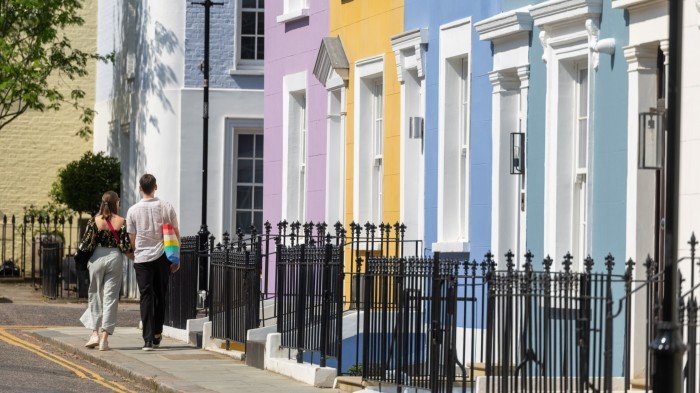Stay informed with free updates
Simply sign up to the UK house prices myFT Digest — delivered directly to your inbox.
House prices in Kensington and Chelsea have fallen to their lowest since 2013, underscoring the underperformance of prime London property due in part to higher property levies, uncertainty over Brexit and non-dom tax changes.
The average price in the UK’s most expensive borough plunged 15.1 per cent year on year in March to £1.19mn, the lowest since May 2013, according to Financial Times analysis of data from the Office for National Statistics.
In the same month, UK house prices rose by an annual rate of 6.4 per cent to a record high of £271,000, the fastest annual pace since December 2022.
Local housing data is based on a smaller number of transactions, resulting in more volatility and larger revisions, but prices in affluent Kensington and Chelsea have fallen year on year for the past 30 consecutive months and for more than half the time since 2015.
In March, house prices were also down in other high-end locations in the UK capital, including Hammersmith and Fulham, and Westminster, which registered annual contractions of 13.2 per cent and 20.1 per cent. In both areas, the decline lasted for at least the past 15 months.
Lucian Cook, head of residential research at real estate company Savills, said the “prolonged bull run” enjoyed by the prime London market “really changed around 2014” when reforms to stamp duty drastically widened the gap in fees between high-end properties and cheaper ones.
Factors including Brexit, the abolition of the non-dom tax regime, the Covid-19 pandemic, increased stamp duty fees on second homes and higher interest rates had since “played against a market which has essentially been much more dependent upon flows of international wealth than it has necessarily on the cost and availability of domestic mortgage debt”, he added.
The non-dom regime — which allowed foreign domiciled nationals resident in Britain to earn money from abroad without paying UK tax on it for up to 15 years — was scrapped by chancellor Rachel Reeves last year, after her Conservative predecessor Jeremy Hunt said he would abolish it.
The ONS on Wednesday said the end of a temporary stamp duty holiday on April 1 — which took thresholds back to pre-2022 levels — boosted national house prices in March, particularly in the North East, where costs jumped by an annual rate of 14.3 per cent.
As of last month, first-time buyers will start paying the levy when they buy properties worth £300,000 or more, down from £425,000 during the holiday. Stamp duty on the most expensive properties, which make up the prime London market, remains unchanged.
Despite not being adjusted for inflation, house prices in prime London local authorities were down from their mid-2024 levels in March, but up by almost 60 per cent in the UK and by 33 per cent in London overall.
House prices in the capital underperformed the rest of the country during the pandemic, though detached properties in prime locations enjoyed temporary boosts.
Stuart Bailey, head of super-prime London sales at real estate group Knight Frank, said it had “been a 10-year slow ebbing in pricing, because there has been less demand” as stamp duty rose and “international buyers are thinking about what they want to do”.
A “massive price influx” in the four years to 2014, Bailey added, was “not sustainable over the longer term” and “we ended up on a longer downward trend”.
Across 21 international prime markets, London and Kuala Lumpur were the only markets to register a fall in property prices in dollar terms over the past decade, according to research by Savills.
While the ONS tracks all properties in each London local authority, Savills based its research on only high-end properties. Its analysis of the capital’s prime properties in the most expensive local authorities found the average property price in central London was 21.2 per cent down on its June 2014 peak in the first three months of this year — equivalent to a saving of £1.2mn on the typical property, which now costs about £4.6mn.
Savills expects house prices in prime central London to contract by 4 per cent this year.
Richard Donnell, executive director of property consultancy Houseful, said sustained house price growth in high-end parts of the capital would be “dependent upon stronger economic growth and increased inward investment into the London economy”.
Bailey at Knight Frank said “sentiments need to improve” for the trend to be reversed. While the capital’s long-term stability in terms of politics, personal security and financial stability meant it still had “allure and attraction” for many international buyers, “we mustn’t be complacent about that”, he added.




